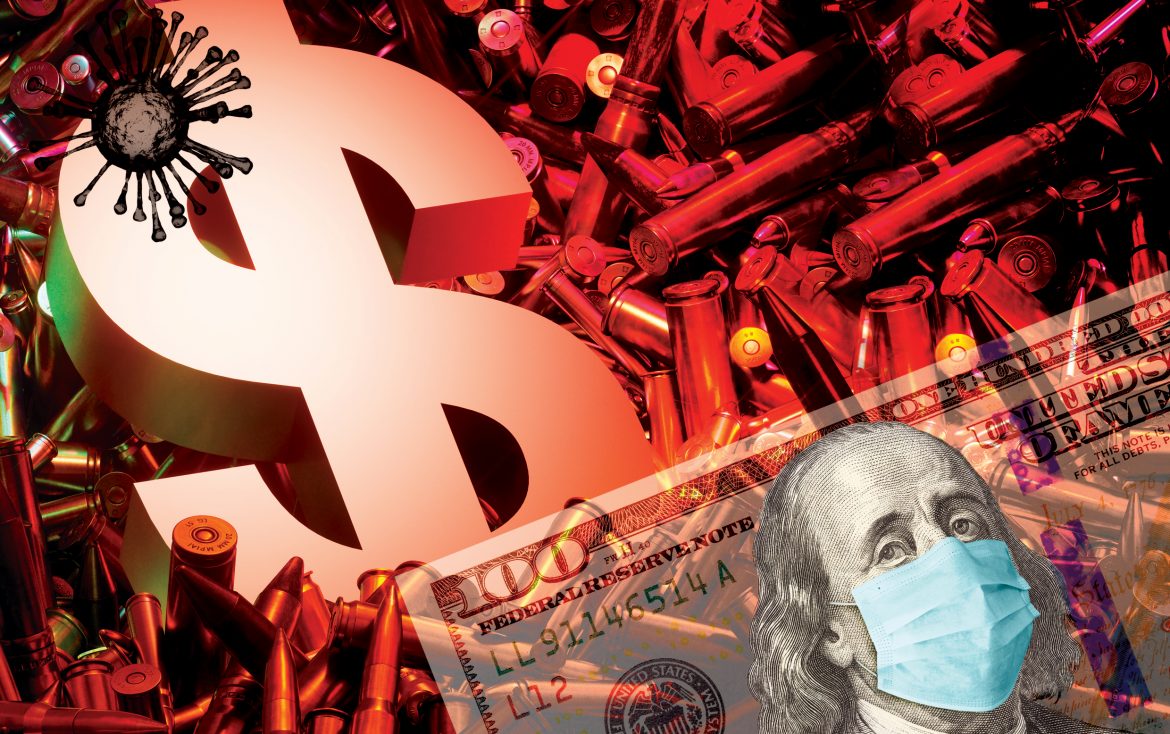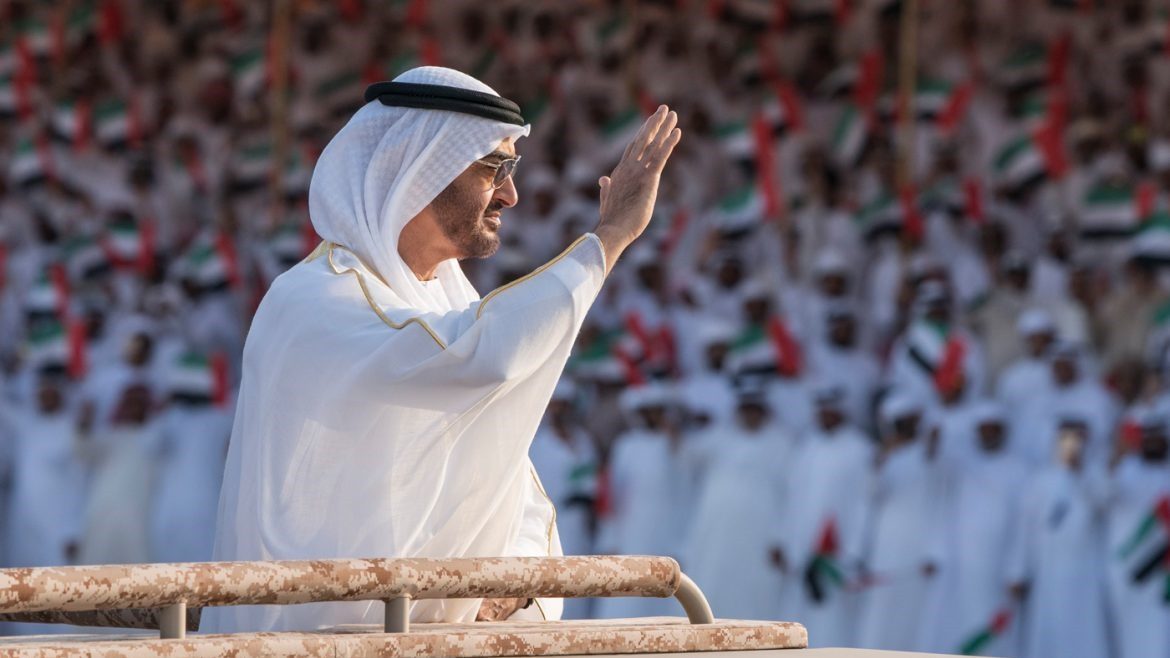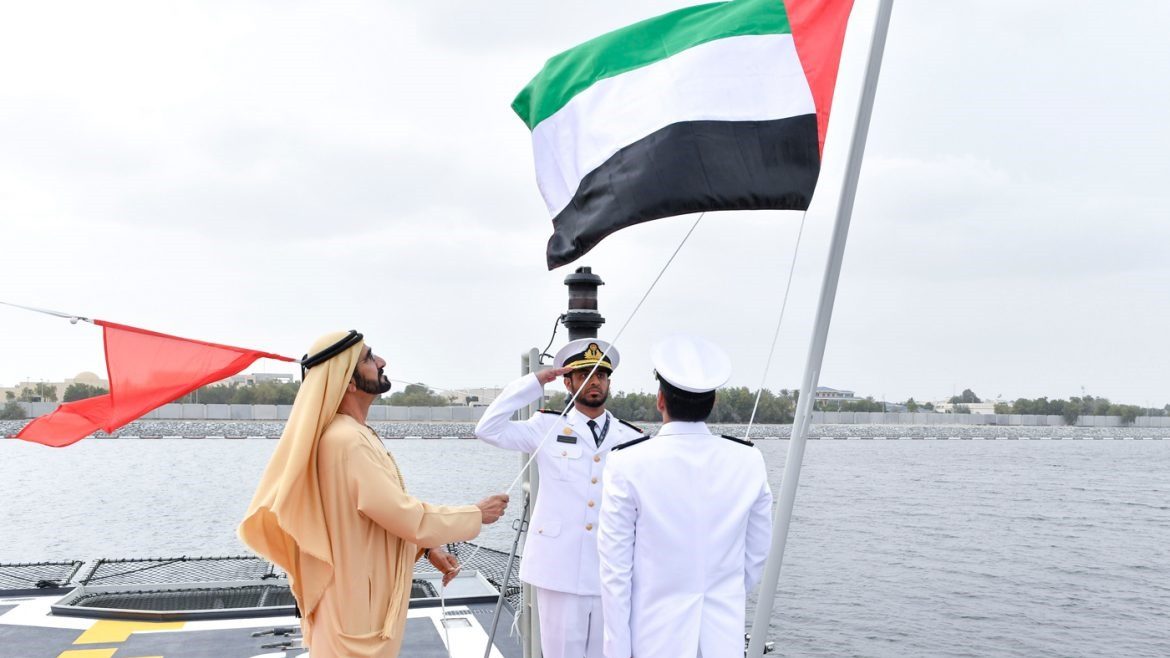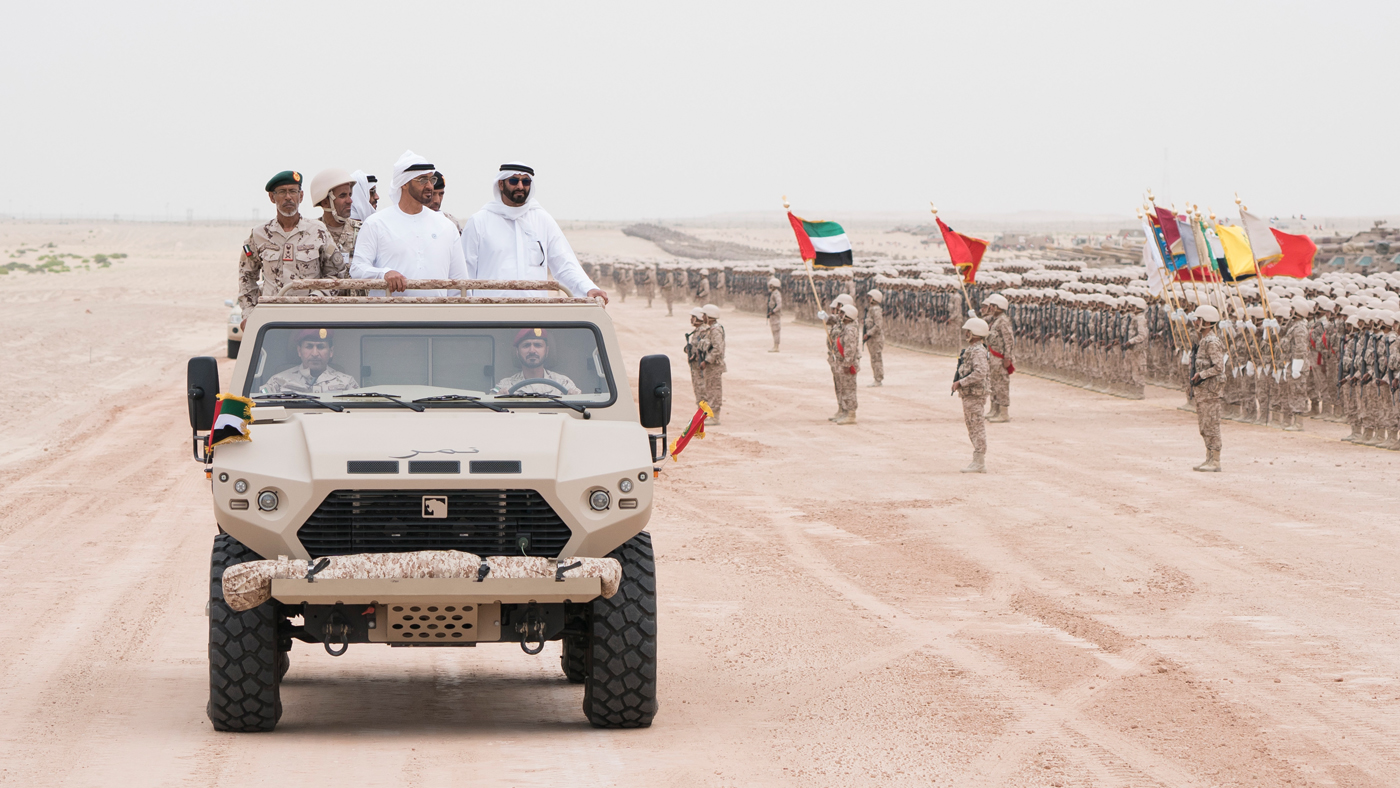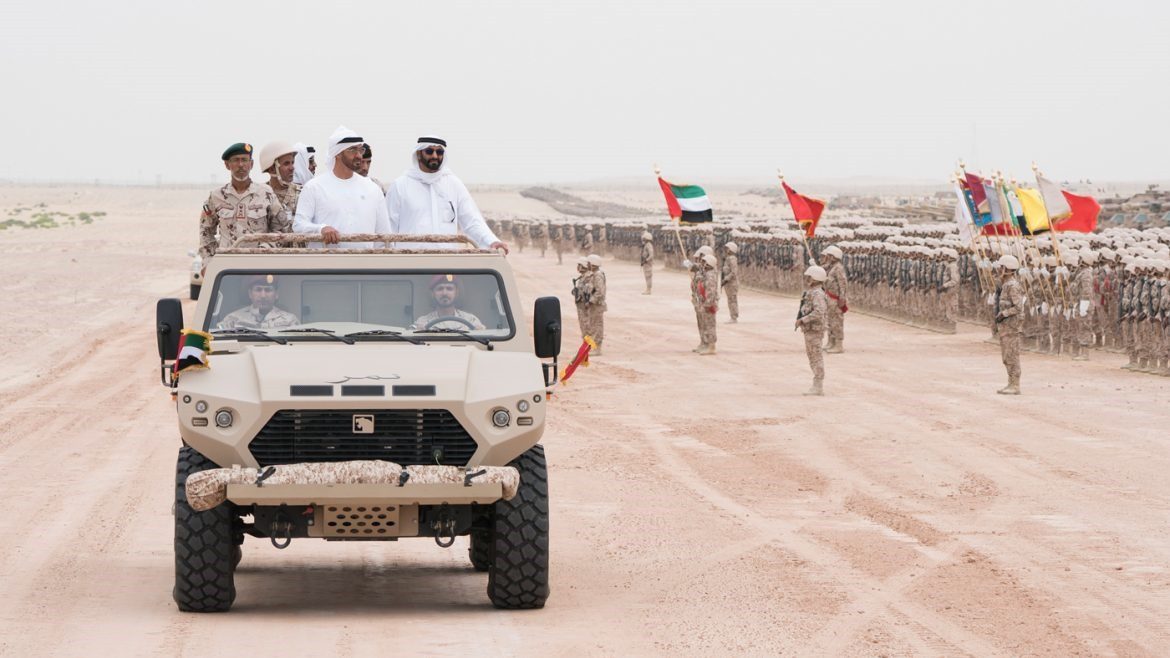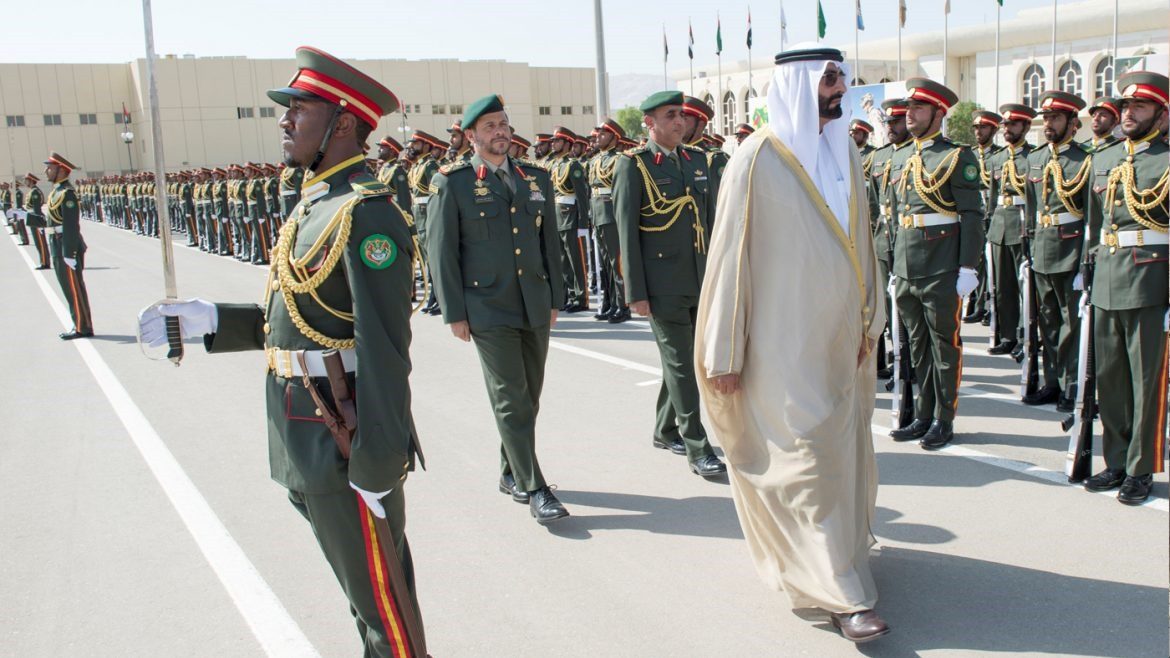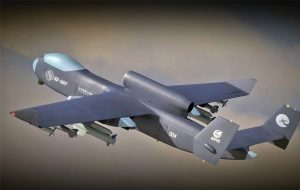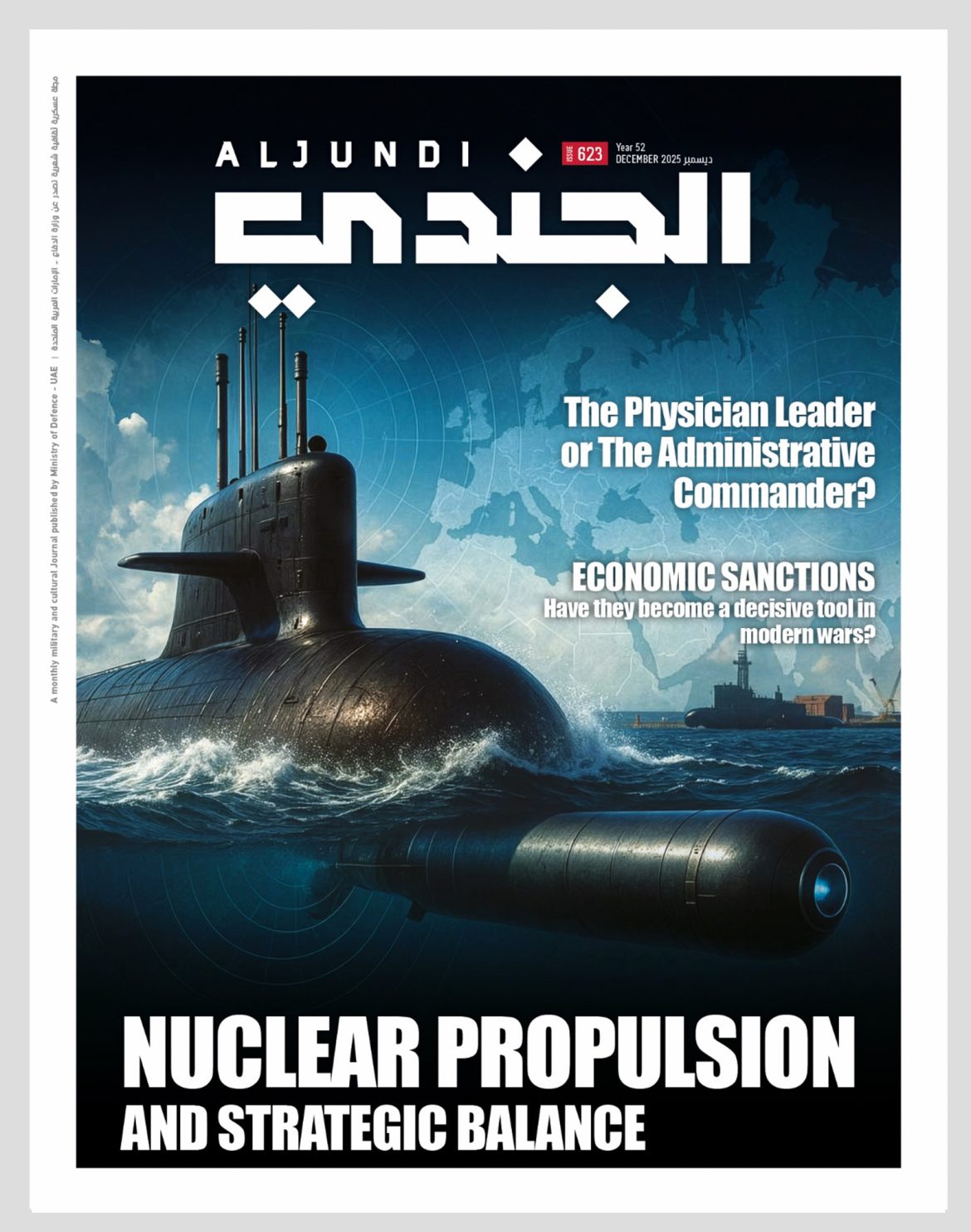The U.S. and its allies are using a new forum started by the Pentagon’s top artificial intelligence office to work toward developing Artificial Intelligence (AI) systems that can connect in the future to help them fight better together.
Despite the “Covid-19” pandemic, which was supposed to reduce global military spending in favor of spending on other aspects, health, social, humanitarian and relief, to alleviate the burden of this pandemic, the latest estimates indicate the opposite, according to the latest report issued by the Stockholm International Research Institute. Peace (SIPRI), in April 2021, the total global military spending rose to 1.981 trillion dollars in 2020, an increase of 2.6% compared to 2019, and this in turn raises a host of questions about the factors behind the continuous increase behind global military spending? What are the geopolitical indications for the continuation of this increase? And its potential repercussions on international peace and security?
Mmilitary spending
There are many theoretical trends around the concept of military spending, one of which focuses on the narrow meaning that is limited to a country’s defense budget, and the abstract numbers that represent it, which include spending on the armed forces, whether in terms of armament, development, modernization, or training. Another trend that adopts a more comprehensive view is that military spending includes, in addition to the above, civilian projects in which the state invests in civilian sectors related to the armed forces, such as infrastructure and basic projects and other service projects that are reflected in one way or another on the performance of the armed forces.
However, the prevailing trend is the most comprehensive of military spending, which is adopted by the Stockholm International Peace Research Institute (SIPRI), which views military spending as including all aspects of spending related to the armed forces, the tasks that they perform both inside and outside the country, and joint projects with civilian bodies. Defense and military industries, investment in modern technology, spending on maintenance, research and development, military assistance provided from one country to another, and military participation in external missions, whether in crisis and conflict areas or in peacekeeping operations.
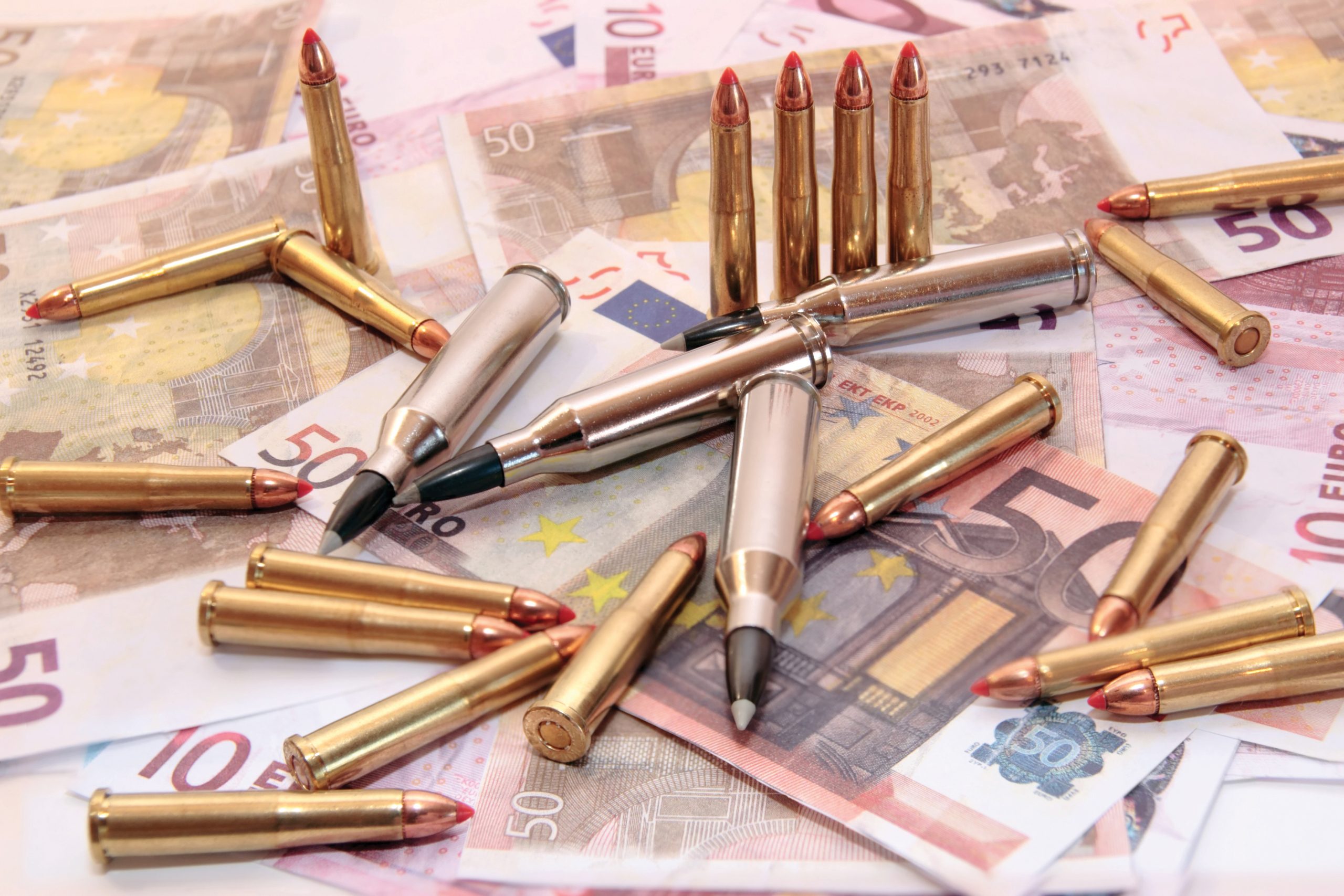
The military spending of a country is affected by its economic conditions, the nature of its relations with its neighbors, and developments in the regional and international environments, in other words, a country that has a strong economy tends to increase its military spending as it is a strategic necessity to maximize its armed strength, and then its comprehensive strength, on the basis that the armed force is in any state constitutes the main pillar of maximizing its comprehensive power and enhancing its political weight in the international system. Meanwhile, countries that face economic problems will reduce their military spending, because their priorities will be focused on the development and service aspects that are related to the lives of their citizens.
Military spending in a country is also affected by the nature of its relations with its neighbors, and if these relations are dominated by the conflict side, it increases its military spending – even if it suffers from economic problems – on the basis that this would maximize its military deterrent power in the face of its opponents. At the same time, developments in the regional and international environments are reflected in one way or another on global military spending, as happened during the Cold War era in which the world witnessed a sharp polarization between the western camp led by the United States of America and the eastern camp led by the Soviet Union, when the axes and alliances appeared, which was embodied in NATO in the face of the “Warsaw” alliance, and there was a fevered arms race and increased spending on unconventional, biological and nuclear weapons between the two superpowers, which ultimately led to the collapse of the Soviet Union at the end of the eighties of the last century.
With the end of the Cold War, military spending declined – temporarily – and then quickly returned to the rise in the last decade of the third millennium, as a result of competition between major powers over conflicts and influence in the world, and the emergence of new types of wars such as trade, technological, space and cyber wars, which led to a return to the phenomenon of the global arms race.
Indicators of Global Military spending in Light of COVID-19
The annual report issued by the Stockholm International Peace Research Institute (SIPRI), in April 2021, confirms the continued increase in global military spending, despite the “Covid-19” pandemic, which led to the contraction of the global economy and a decline in growth rates in most countries of the world. According to the report data, total global military spending rose to 1.981 trillion dollars in 2020, an increase of 2.6% compared to 2019.
It was remarkable in this context that the proportion of military spending as a share of the gross domestic product reached a global average of 2.4% in 2020, up from 2.2% in 2019, and this is the largest annual increase since the global financial and economic crisis in 2009. This was contrary to the expectations that the “Covid-19” pandemic would lead to a reduction in global military spending in favor of other economic and social priorities, to mitigate the repercussions of this pandemic on the world.
According to the report, the countries and regions with the highest spending on arms in the world, are as follows:
1 The United States, China, India, Russia, and the United Kingdom were among the five largest spending countries in the military field in 2020, and together they accounted for 62% of total global military spending, as US military spending reached $ 778 billion, an increase of 4.4% over 2019, to account for 39% of total global military spending. China came in second place. The value of its military expenditures in 2020 reached 13 percent of the total global military spending. In the third place came India, with its military spending amounting to 72.9 billion dollars (about 3.7 percent of the global military expenditure). In fourth place is Russia, with its military spending amounting to 61.7 billion dollars, about (3.1% of global spending), and in fifth place is the United Kingdom (59.2 billion dollars, equivalent to 3% of total global military spending.
2 Military spending in the countries of the Asia and Oceania region continued to rise, in addition to China and India, Japan spent ($ 49.1 billion), South Korea ($ 45.7 billion), and Australia ($ 27.5 billion), and Asia is one of the regions experiencing a continuous increase in military spending since 1989, due to considerations related to border tensions and geopolitical conflicts taking place.
3 Military spending for most of NATO countries increased in 2020, as 12 of its members spent about 2% or more of GDP on developing their armies, with an increase of three countries compared to 2019, for example, Germany ranked seventh where it spent $ 52.8 billion, an increase of 5.2%. France, which ranks eighth in the world in terms of military spending, surpassed the 2% threshold for the first time since 2009. These estimates are consistent with what was stated in the annual report of NATO issued in March 2021, which indicated that 2020 was the sixth year in a row in which there was an increase in defense spending by various European allies and Canada, with an actual increase of 3.9%, as the total military spending of the thirty members of the Alliance reached $ 1,028 trillion (860 billion euros).
4 The combined military spending of 11 Middle Eastern countries decreased by 6.5% in 2020, and reached $ 143 billion, equivalent to 9% of global military spending. But according to the report’s data, only four countries increased their military spending rates, as Egypt increased its spending by 7.3%, Israel by 2.7%, Jordan by 2.5%, and the Sultanate of Oman by 1.7%.
5 Military spending in sub-Saharan Africa increased by 3.4% in 2020, to reach $ 18.5 billion. The largest increase was made by Chad, Uganda, Nigeria, Mali and Mauritania, due to considerations related to tensions and conflicts and confronting extremist and terrorist organizations in this region.
An analytical reading of military spending trends in the world
The previous statistics contain a set of important military, political and strategic implications, as follows:
1 The general trend of military spending in the world is constantly increasing, regardless of the global crises, disasters and pandemics that burden the global economy, at a time when the “Covid-19” pandemic was supposed to lead to a decline in this spending or at least its stability at its previous levels, especially in countries that faced difficulties in dealing with the pandemic and mitigating its repercussions, many countries of the world continued to have high military spending, and the map of the countries that spent the most in the year 2020 (the first year of the pandemic) did not change from the previous year. Without denying that, a limited number of countries in the world have reconsidered their priorities as part of their response to deal with the repercussions left by the pandemic, by reducing part of their military spending and directing it to spending on health and social aspects.
2 Although global military spending mainly focused on modernizing and developing states’ conventional and non-conventional military capabilities, another aspect has started to gain more attention recently, which is investment in research and development and artificial intelligence technology, which is of great importance for the defense, military and technological industries, and to the race between the major powers for control of the arms market in the world.
3 Since the end of the Cold War in the late 1980s until 2020, the world has witnessed a steady increase in military spending, but it is worth noting that while military spending increased in the four regions (the Americas, Europe, Asia and Africa), it decreased in the Middle East in 2020, as shown in the figure below, which is a testament to the continuing atmosphere of conflict and tension in the regional and international environments.
What is behind the increase in military spending in the world?
There is no doubt that the increase in military spending in the world is behind a set of factors and considerations, which can be explained as follows:
1 The domination of the nature of tension and conflict over international relations, not only between the major powers that compete with each other for influence and position in the post-“Covid-19” world, but also between many regional powers in different regions around the world, each of which seeks to achieve strengthening its regional role at the expense of others, and all this represents one of the main reasons that explains the continued increase in its military spending and the modernization of its arsenal of weapons.
2 The vast majority of countries in the world, especially the international and regional powers, still view military power as a title of their comprehensive strength, a symbol of their political influence, and a deterrent force in the face of challenges and dangers that pose a threat to their national security and supreme interests. Therefore, they maintain constant rates of the level of their military spending which may increase or decrease sometimes, depending on the economic situation and nature of changes and developments in the regional and international security environment.
3 Conflicts and military confrontations taking place in many regions around the world, in part, explain the continued increase in global military spending, which pushes the parties involved in them to spend more on modernizing and developing their arsenals of conventional and non-conventional weapons, especially in light of the faltering efforts to settle these disputes. According to the report of the International Institute for Strategic Studies for the year 2021, the map of conflicts in many regions around the world is experiencing more complexity, as clearly embodied in the Middle East region, where the conflicts in Libya, Syria and Yemen continue, and the conflict continues in Ukraine as well. In Africa, many armed conflicts still rage, and their impact on global military spending cannot be ignored.
4 Combating terrorism and extremist organizations: The increase in global military spending is partly related to the ongoing war against terrorism in many regions around the world, which witness the presence of many extremist and terrorist organizations, as is the case in the Sahel and Sub-Saharan regions in Africa, whose countries came among the countries that spend the most on weapons in the year 2020, as the threat of terrorism has increased significantly in this region since the beginning of the year 2021, as many of its countries have been subjected to terrorist operations by organizations affiliated with al-Qaeda and ISIS. According to the Global Terrorism Index for 2020, the increase in ISIS activity in sub-Saharan Africa is the main factor behind the escalation of the threat of terrorism in that region, as the organization carried out 41% of its total attacks in this region. There is no doubt that confronting the threat of terrorism and confronting extremist organizations across borders explains, in part, the steady increase in global military spending, not only for countries that are already facing the threat of terrorism, but also for the major powers that allocate part of their defense budgets to external participations aimed at addressing this threat, as is the case in Sub-Saharan Africa, Afghanistan, and some countries in the Middle East.
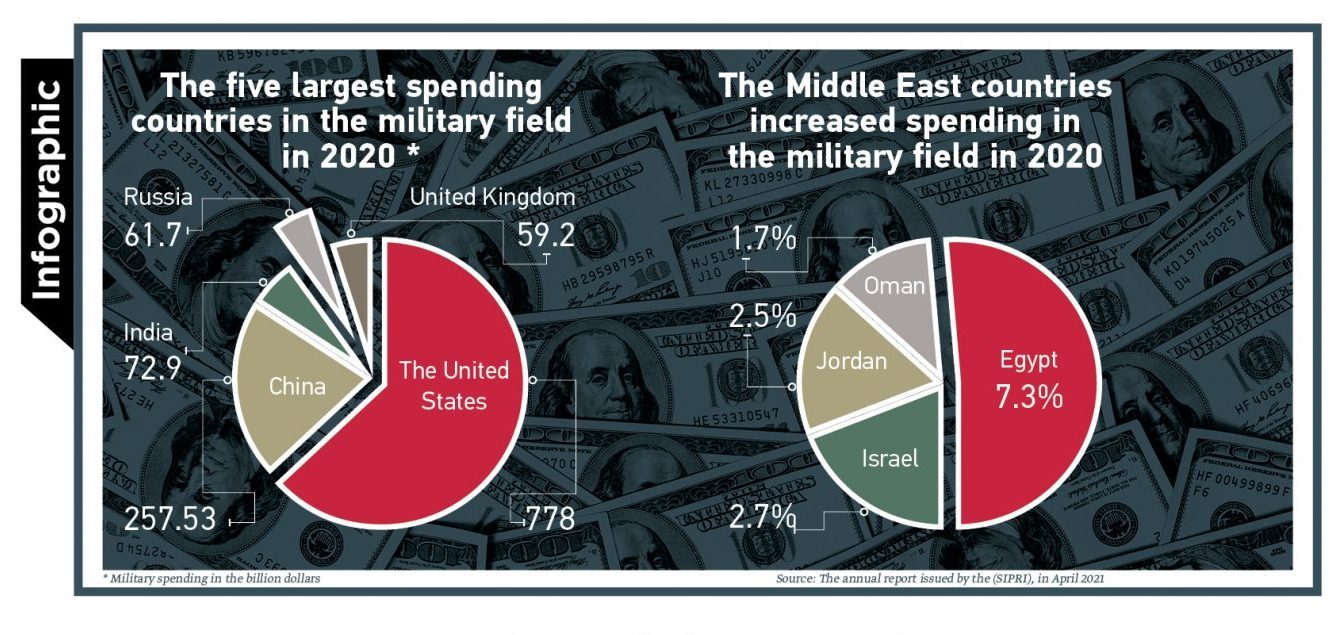
Finally, the steady increase in the rates of global military spending in the year 2020, although it reflects the dominance of the nature of tension and conflict in international relations, and the escalation of competition between major and regional powers to enhance their influence in the post-“Covid-19” world, it indicates at the same time to the return of the global arms race in a way that surpasses the stage of the Cold War, especially in light of the escalation of the role of technology, especially artificial intelligence and cyber-attacks, in reshaping future wars.
Sources and references
Stockholm International Peace Research InstituteSIPRI, World military spending rises to almost $2 trillion in 2020,26 April 2021,https://bit.ly/3ufUiwI
» By: Gamal Nazi
(Military Affairs’ Researcher)


